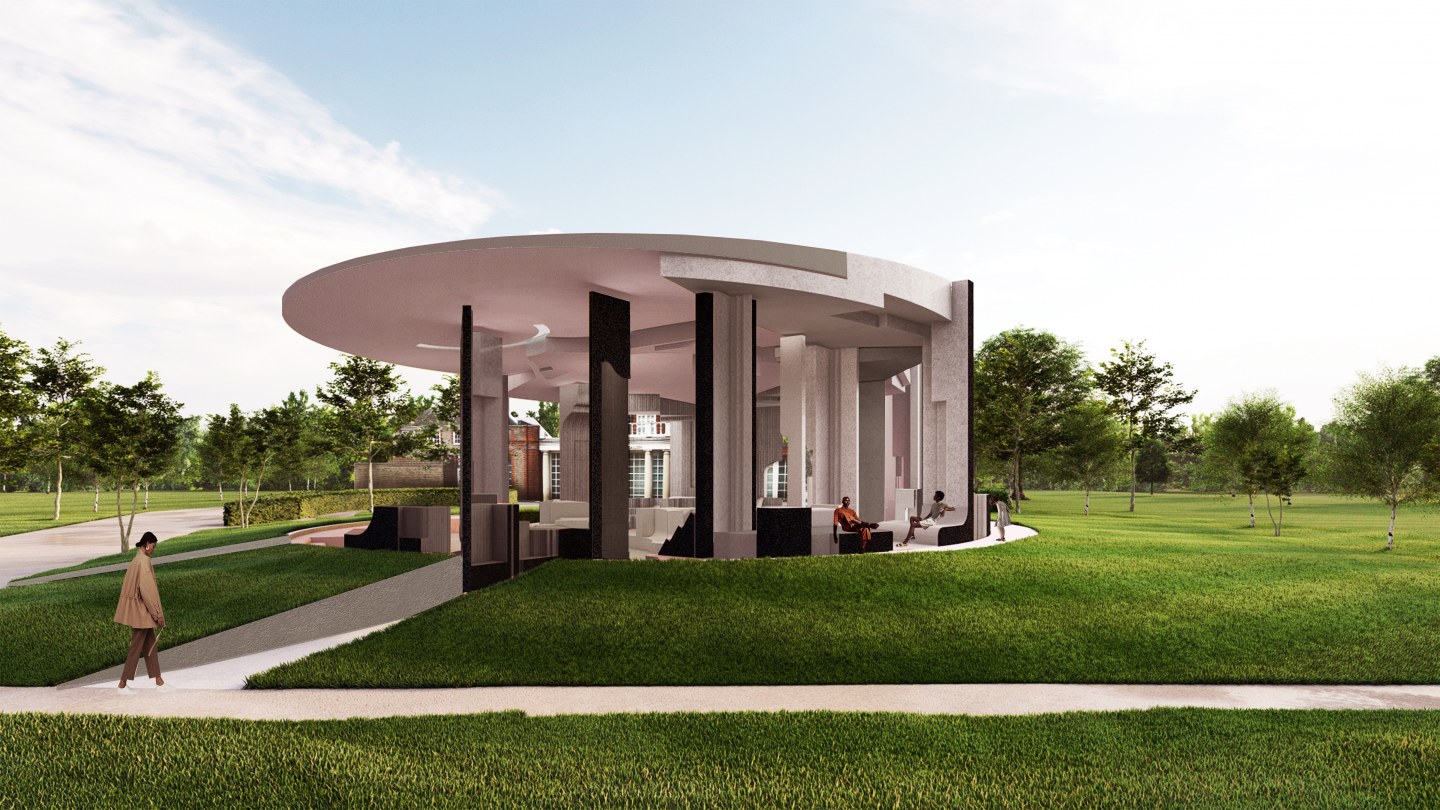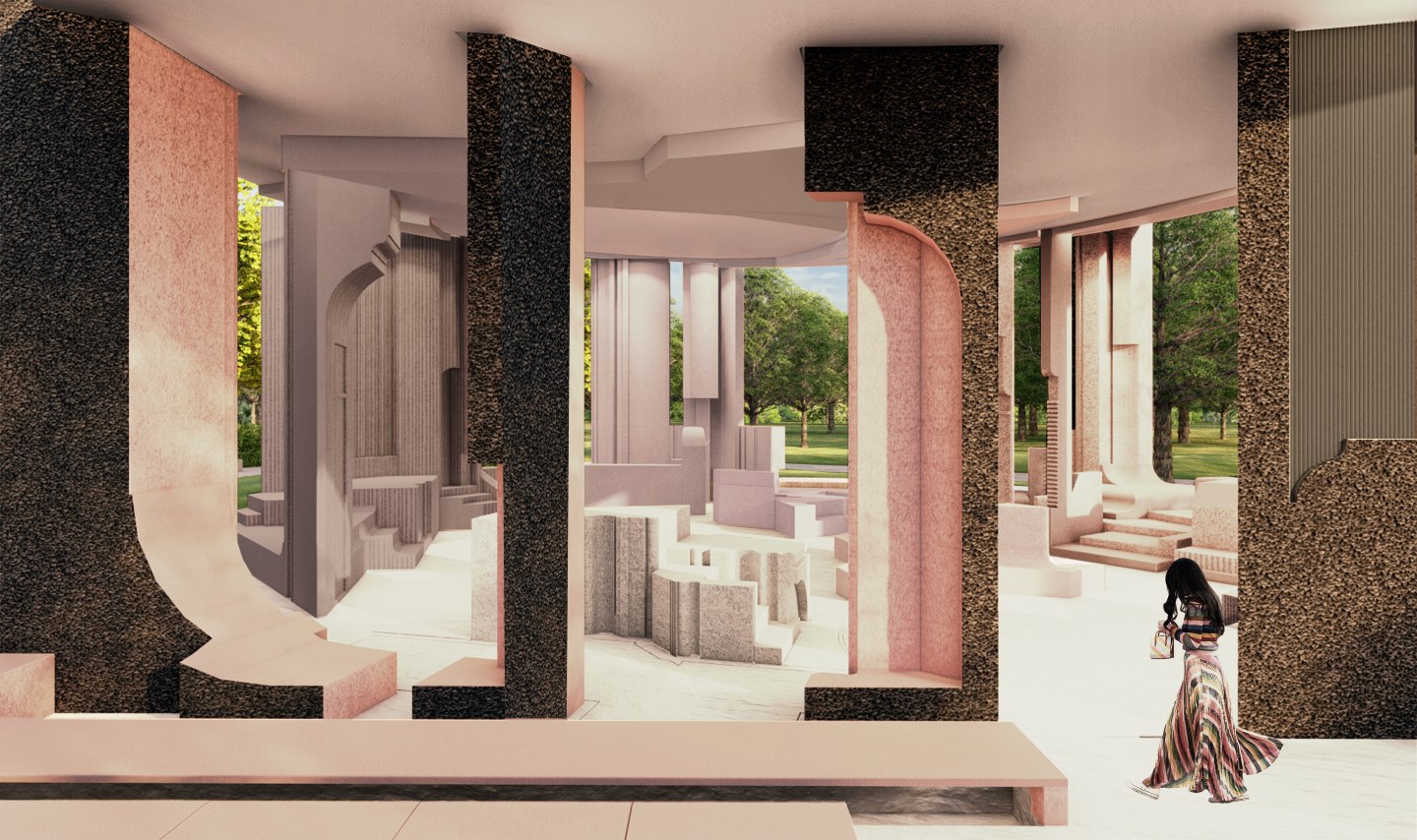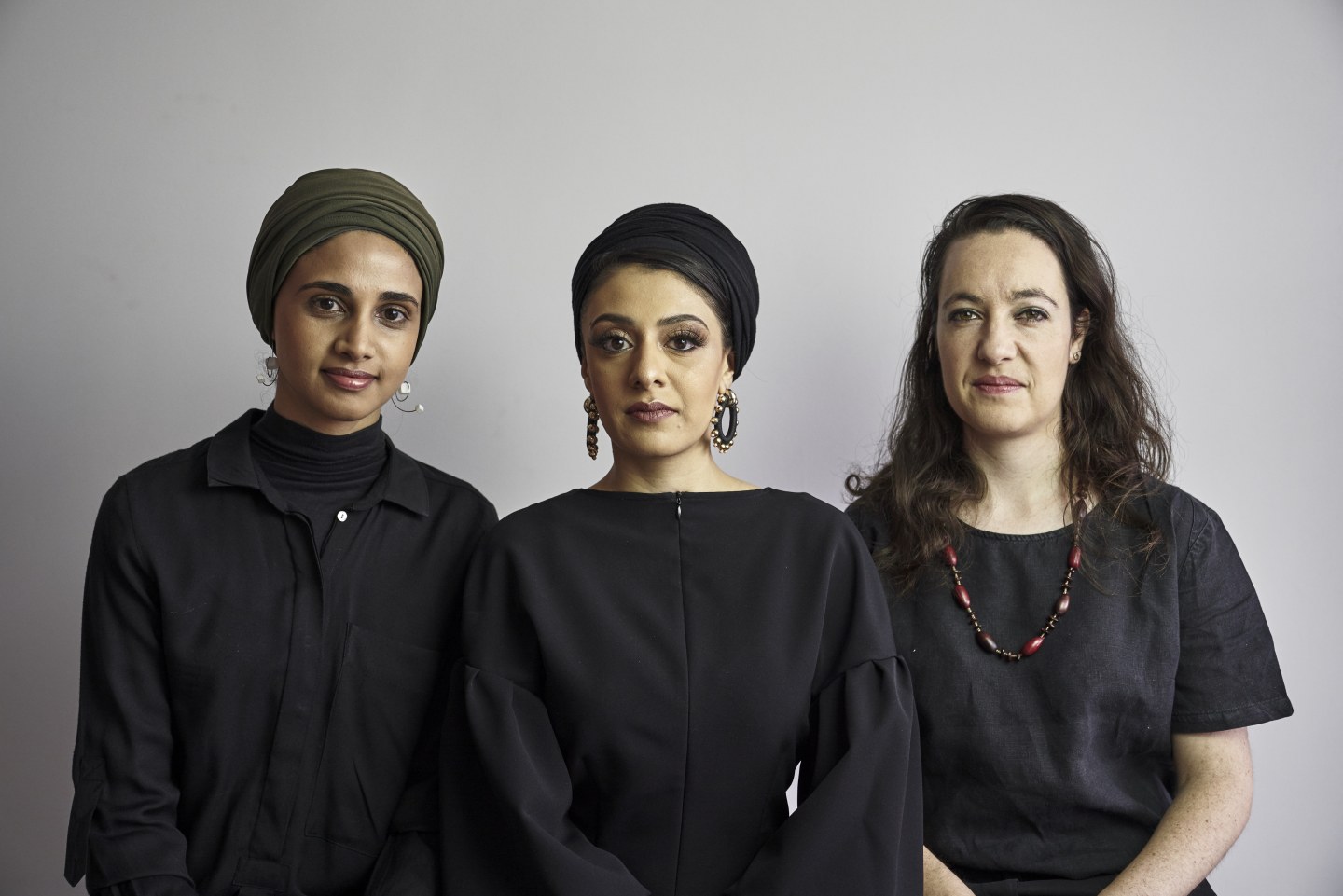An all-woman team of Sumayya Vally, Sarah de Villiers and Amina Kaskar, the youngest ever architects to be commissioned, has been selected to design the Serpentine Pavilion 2020.
Johannesburg-based practice Counterspace, directed by the all-woman team of Sumayya Vally, Sarah de Villiers and Amina Kaskar, has been selected to design the Serpentine Pavilion 2020. All three were born in 1990 and are the youngest ever architects to be commissioned for this internationally renowned architecture programme, now in its 20th year.
Using both innovative and traditional building techniques, Counterspace’s design will be based on gathering spaces and community places around the city, folding London in to the Pavilion structure in Kensington Gardens, and extending a public programme across London.
The shapes of the Pavilion are created from a process of addition, superimposition, subtraction and splicing of architectural forms, directly transcribed from existing spaces with particular relevance to migrant and other peripheral communities in London.

On its 20th anniversary, more than ever, the Serpentine Pavilion will be a place for debate and new ideas.

A live programme running throughout the summer connects to the Serpentine’s ambitious multi-platform project Back to Earth and sets out to explore questions such as: how can architecture create a space where we are all linked, not ranked? How can architecture promote wellbeing? Can a structure evolve and change together with the environment?
The Pavilion will include moveable small parts that will be displaced to neighbourhoods across London. Following community events at these locations, the parts will be returned to the structure, completing it over the summer.
Employing a mix of low-tech and high-tech approaches to sustainability, the Pavilion will be constructed from a variety of materials, including custom K-Briq-modules and cork provided by Amorim. K-Briqs are made from 90% recycled construction and demolition waste and are manufactured without firing, with a tenth of the carbon emissions of normal bricks.
The lead architect on the project, Sumayya Vally of Counterspace, said of the design: “The pavilion is itself conceived as an event — the coming together of a variety of forms from across London over the course of the Pavilion’s sojourn. These forms are imprints of some of the places, spaces and artefacts which have made care and sustenance part of London’s identity. The breaks, gradients and distinctions in colour and texture between different parts of the Pavilion make this reconstruction and piecing together legible at a glance. As an object, experienced through movement, it has continuity and consistency, but difference and variation are embedded into the essential gesture at every turn.
Places of memory and care in Brixton, Hoxton, Hackney, Whitechapel, Edgware Road, Peckham, Ealing, North Kensington and beyond are transferred onto the Serpentine lawn. Where they intersect, they produce spaces to be together.”

Counterspace is a Johannesburg-based collaborative architectural studio, directed by Sumayya Vally, Sarah de Villiers and Amina Kaskar, founded in Johannesburg in 2015. Much of their work emerges from research and interdisciplinary arts-based projects, undertaking predominantly architectural projects, community engagement, exhibition and installation conceptualisation and urban research, design and intervention. Their work is influenced with ideas towards inclusivity, otherness and future; and often intersects with other creative disciplines in the formation of innovative approaches to design challenges.
Counterspace is the 20th practice to accept the invitation to design a temporary Pavilion on the Serpentine Gallery’s lawn in Kensington Gardens. This pioneering commission, which began in 2000 with Zaha Hadid, has presented the first UK structures by some of the biggest names in international architecture. In recent years it has grown into a highly-anticipated showcase for emerging talent, from Frida Escobedo of Mexico to Francis Kéré of Burkina Faso and Bjarke Ingels of Denmark, whose 2016 Pavilion was the most visited architectural and design exhibition in the world. The Pavilion programme has evolved over 20 years as a commissioning platform for the Serpentine’s experimental, interdisciplinary live, community and family programmes.
Serpentine Galleries Artistic Director Hans Ulrich Obrist said: “We are thrilled to be working with Counterspace on our 20th Pavilion in our 50th anniversary year.
The idea of working with different communities is very important for us and Counterspace’s proposal does this in a remarkable way; we were totally convinced by the social dimension of their practice. They bring an African perspective, an international perspective but they are working with locations and communities right here in London and their Pavilion design is inspired by that work. In everything the Serpentine does we want to make those connections between artists, architects and communities wherever they are.
This year, our art and architecture programmes will be closely integrated. At the heart of the Pavilion will be the programme of events, performances, debates, discussions and symposia linked to Back to Earth, a landmark project which invites artists’ responses to climate emergency.”
The Serpentine celebrates its 50th anniversary in 2020. Championing the possibilities of new ideas in contemporary art since opening in 1970, the Serpentine has presented pioneering exhibitions for half a century, showing a wide range of work from emerging practitioners to the most internationally recognised artists of our time, providing a place for them to experiment and an open platform for them to be seen and heard.
READ ALSO: Αποκατάσταση του διατηρητέου κτιρίου της σχολής Alessandro Manzoni του 1933 στη Θεσσαλονίκη | Δίσκου Μαρία & Καρκάρη Μαρία